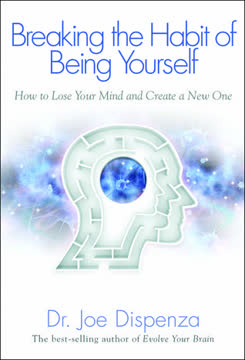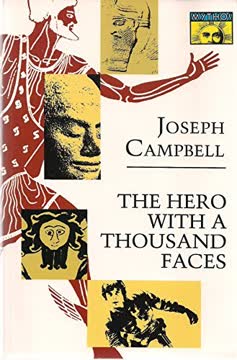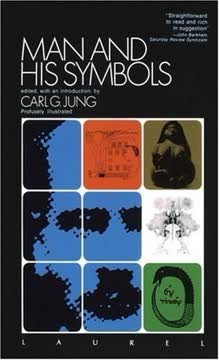نکات کلیدی
1. مبارزه فرد در جامعه مدرن
تودهها بینش و تأملی را که هنوز برای فرد ممکن است، از بین میبرند و این بهطور ضروری به استبداد دکترینری و اقتدارگرایانه منجر میشود اگر دولت قانون اساسی به ضعف دچار شود.
تهدید جامعه تودهای: در جامعه مدرن، فرد با فشار فزایندهای از سوی جنبشهای تودهای و تفکر جمعی مواجه است. این فشار میتواند به سرکوب تأمل و بینش فردی منجر شود و در صورت عدم کنترل، به سیستمهای اقتدارگرایانه منتهی شود.
مسئولیت فردی: با وجود تأثیر فراگیر روانشناسی تودهای، فرد همچنان حامل آگاهی و منبع تغییرات بالقوه است. حفظ استقلال و توانایی تفکر انتقادی برای مقاومت در برابر اثرات همگنسازی جامعه تودهای ضروری است.
آگاهی روانشناختی: درک روان خود، از جمله جنبههای ناخودآگاه آن، برای حفظ فردیت در برابر فشارهای اجتماعی ضروری است. این خودشناسی میتواند به عنوان یک سپر در برابر تمایل به پیروی کورکورانه از هنجارها و انتظارات جمعی عمل کند.
2. دین به عنوان تعادلی در برابر ذهنیت تودهای
دین به معنای وابستگی و تسلیم به حقایق غیرعقلانی تجربه است. اینها به شرایط اجتماعی و فیزیکی مستقیماً اشاره نمیکنند؛ بلکه بیشتر به نگرش روانی فرد مربوط میشوند.
کارکرد روانشناختی دین: دین به عنوان تعادلی در برابر ذهنیت تودهای عمل میکند و به افراد ارتباطی با چیزی فراتر از دنیای مادی میدهد. این ارتباط میتواند به حفظ تعادل روانی و ارائه حس معنا و هدف کمک کند.
تضاد با ایدئولوژی دولتی: در حالی که ادیان بر رابطه فرد با واقعیتهای متعالی تمرکز دارند، ایدئولوژیهای دولتی تمایل به تأکید بر اهداف جمعی و همگنی دارند. دیدگاه دینی میتواند جایگزین انتقادی برای خواستههای دولت یا جامعه ارائه دهد.
چالشهای مدرن: در دنیای بهطور فزاینده سکولار، بسیاری از افراد در یافتن جایگزینهای معنادار برای چارچوبهای دینی سنتی دچار مشکل میشوند. این خلأ میتواند افراد را در برابر جنبشها یا ایدئولوژیهای تودهای که وعده قطعیت میدهند، اما ممکن است در نهایت آزادی و رشد فردی را محدود کنند، آسیبپذیر کند.
3. اهمیت رویاها در درک روان
رویاها رایجترین و بهطور جهانی در دسترسترین منبع برای بررسی توانایی نمادسازی انسان هستند.
پنجرهای به ناخودآگاه: رویاها بینش منحصربهفرد و ارزشمندی به ذهن ناخودآگاه ارائه میدهند. آنها جنبههایی از روان ما را که بهآسانی در دسترس آگاهی بیداری ما نیستند، آشکار میکنند و تصویری کاملتر از چشمانداز ذهنی ما ارائه میدهند.
کارکرد جبرانی: رویاها اغلب برای تعادل یا جبران نگرش آگاهانه عمل میکنند. آنها ممکن است دیدگاهها یا احساساتی را که در زندگی بیداری نادیده گرفته یا سرکوب شدهاند، ارائه دهند و به حفظ تعادل روانی کمک کنند.
ماهیت نمادین: محتوای رویاها معمولاً نمادین است و نه تحتاللفظی. درک این نمادها نیاز به تحلیل و تفسیر دقیق دارد، با در نظر گرفتن هم تداعیهای شخصی و هم معانی جهانی یا کهنالگویی.
4. زبان و نمادگرایی رویاها
رویا این جنبه را به صورت یک تصویر نمادین و نه به عنوان یک فکر عقلانی نشان میدهد.
ارتباط نمادین: رویاها از طریق نمادها و تصاویر و نه تفکر عقلانی و خطی ارتباط برقرار میکنند. این زبان نمادین میتواند ایدهها و احساسات پیچیدهای را که ممکن است در زندگی بیداری بهسختی بیان شوند، منتقل کند.
نمادهای شخصی و جمعی: نمادهای رویا میتوانند هم معانی شخصی، بر اساس تجربیات فردی، و هم معانی جمعی یا کهنالگویی که جهانیتر هستند، داشته باشند. تفسیر رویاها نیاز به در نظر گرفتن هر دو سطح نمادگرایی دارد.
اهمیت زمینه: معنای نمادهای رویا به شدت به زمینه رویا و تداعیهای شخصی رویاپرداز وابسته است. یک نماد واحد میتواند در رویاهای مختلف یا برای افراد مختلف معانی بسیار متفاوتی داشته باشد.
5. کهنالگوها و ناخودآگاه جمعی
کهنالگو، برعکس، تمایل ارثی ذهن انسان به شکلگیری بازنماییهای موتیفهای اسطورهای است—بازنماییهایی که به شدت متفاوت هستند بدون اینکه الگوی اساسی خود را از دست بدهند.
الگوهای جهانی: کهنالگوها الگوها یا موتیفهای ذاتی و جهانی هستند که در ناخودآگاه جمعی ظاهر میشوند. آنها پایه بسیاری از اسطورهها، داستانها و نمادهای دینی ما در فرهنگهای مختلف را تشکیل میدهند.
تغییرپذیری و ثبات: در حالی که الگوهای اساسی کهنالگوها ثابت میمانند، تجلیات خاص آنها میتواند به شدت بسته به عوامل فرهنگی و شخصی متفاوت باشد. این امر هم جهانی بودن و هم تنوع اسطورهها و نمادهای انسانی را توضیح میدهد.
تأثیر بر رفتار: کهنالگوها میتوانند بهطور قابلتوجهی بر رفتار و تجربه انسانی تأثیر بگذارند، اغلب در سطحی زیر آگاهی عمل میکنند. شناخت و درک این الگوهای کهنالگویی میتواند بینشهای ارزشمندی در روانشناسی فردی و جمعی ارائه دهد.
6. مسئله انواع در تفسیر رویا
اگر کسی بخواهد رویای شخص دیگری را درک کند، باید تمایلات خود را قربانی کند و پیشداوریهای خود را، حداقل برای مدتی، سرکوب کند.
تفاوتهای فردی: انواع روانشناختی مختلف (مثلاً درونگرا در مقابل برونگرا) ممکن است به تفسیر رویا بهطور متفاوتی نزدیک شوند. آگاهی از این تفاوتها برای تحلیل مؤثر رویا ضروری است.
نقش تحلیلگر: تحلیلگر باید تلاش کند تا تعصبات و پیشفرضهای شخصی خود را هنگام تفسیر رویاهای بیمار کنار بگذارد. این نیاز به درجه بالایی از خودآگاهی و انعطافپذیری دارد.
رویکرد جامع: تفسیر مؤثر رویا شامل در نظر گرفتن نوع شخصیت رویاپرداز، شرایط زندگی و تداعیهای شخصی، و همچنین معانی نمادین جهانی است.
7. کارکرد نمادهای دینی در زندگی مدرن
هدف و تلاش نمادهای دینی این است که به زندگی انسان معنا ببخشند.
معناسازی: نمادهای دینی برای ارائه معنا و هدف در زندگی انسانی خدمت میکنند. آنها چارچوبی برای درک جایگاه فرد در جهان و مقابله با چالشهای زندگی ارائه میدهند.
ارزش روانشناختی: حتی در دنیای بهطور فزاینده سکولار، نمادهای دینی همچنان ارزش روانشناختی دارند. آنها میتوانند حس ارتباط با چیزی بزرگتر از خود و ارائه آرامش در زمانهای بحران را فراهم کنند.
چالشهای مدرن: با کاهش باورهای دینی سنتی در بسیاری از جوامع، نیاز به یافتن راههای جدید برای درگیر شدن با تفکر نمادین و معناسازی وجود دارد. این ممکن است شامل تفسیر مجدد نمادهای سنتی یا توسعه نمادهای جدیدی باشد که با تجربیات معاصر همخوانی دارند.
آخرین بهروزرسانی::
FAQ
What's "The Undiscovered Self/Symbols and the Interpretation of Dreams" about?
- Dual Focus: The book combines two of Jung's works: "The Undiscovered Self," which explores the individual's role in society, and "Symbols and the Interpretation of Dreams," which delves into the meaning of dreams and symbols.
- Individual vs. Society: "The Undiscovered Self" discusses the tension between individual self-awareness and societal pressures, emphasizing the importance of self-knowledge in resisting mass-mindedness.
- Dream Analysis: "Symbols and the Interpretation of Dreams" provides insights into how dreams serve as a bridge between the conscious and unconscious mind, using symbols to convey deeper meanings.
- Psychological Exploration: Both works aim to deepen the reader's understanding of the human psyche, encouraging introspection and the exploration of unconscious processes.
Why should I read "The Undiscovered Self/Symbols and the Interpretation of Dreams"?
- Insight into Self: The book offers profound insights into understanding oneself and the unconscious mind, which can lead to personal growth and self-awareness.
- Cultural Relevance: Jung's exploration of the individual's role in society is highly relevant in today's world, where mass culture often overshadows personal identity.
- Dream Interpretation: It provides a framework for interpreting dreams, which can be a valuable tool for psychological self-discovery and understanding hidden aspects of one's personality.
- Timeless Wisdom: Jung's ideas have influenced psychology, philosophy, and spirituality, making this book a valuable resource for anyone interested in these fields.
What are the key takeaways of "The Undiscovered Self/Symbols and the Interpretation of Dreams"?
- Self-Knowledge is Crucial: Understanding oneself is essential for resisting societal pressures and achieving personal freedom.
- Dreams as Guides: Dreams are not random; they are meaningful symbols that can guide individuals toward self-discovery and understanding of the unconscious.
- Archetypes and Symbols: Archetypes are universal symbols that arise from the collective unconscious and play a crucial role in shaping human behavior and culture.
- Balance Between Conscious and Unconscious: A healthy psyche requires a balance between conscious awareness and unconscious influences, which can be achieved through introspection and dream analysis.
How does Jung interpret dreams in "Symbols and the Interpretation of Dreams"?
- Symbolic Language: Jung views dreams as a symbolic language that communicates messages from the unconscious mind to the conscious mind.
- Compensation Mechanism: Dreams often serve as a compensatory mechanism, balancing the conscious mind's one-sidedness by presenting alternative perspectives.
- Archetypal Imagery: Dreams frequently contain archetypal images that reflect universal themes and can provide insights into personal and collective issues.
- Personal Context: While dreams have universal elements, their interpretation must consider the dreamer's personal context and life situation.
What is the significance of symbols in Jung's work?
- Bridge to the Unconscious: Symbols act as a bridge between the conscious and unconscious mind, facilitating communication and understanding.
- Universal and Personal: While symbols can have universal meanings, they also carry personal significance based on the individual's experiences and psyche.
- Dynamic Nature: Symbols are not static; they evolve and change as the individual's consciousness develops and integrates new insights.
- Healing Potential: Engaging with symbols can lead to psychological healing by bringing unconscious content into conscious awareness.
What are archetypes according to Jung?
- Inherited Patterns: Archetypes are innate, universal prototypes for ideas and may be used to interpret observations.
- Collective Unconscious: They reside in the collective unconscious, shared by all humans, and influence thoughts, feelings, and behaviors.
- Symbolic Manifestations: Archetypes manifest in dreams, myths, and cultural symbols, providing a framework for understanding human experiences.
- Dynamic Forces: They are dynamic forces that can shape individual and collective behavior, often emerging during times of crisis or transformation.
How does "The Undiscovered Self" address the individual's role in society?
- Individual vs. Mass Society: Jung emphasizes the importance of individual self-awareness in resisting the homogenizing forces of mass society.
- Self-Knowledge as Resistance: He argues that self-knowledge and personal development are crucial for maintaining individuality in the face of societal pressures.
- Religious Experience: Jung suggests that genuine religious experience can provide a counterbalance to the dehumanizing effects of modern society.
- Psychological Independence: The book advocates for psychological independence as a means of achieving true freedom and authenticity.
What are the best quotes from "The Undiscovered Self/Symbols and the Interpretation of Dreams" and what do they mean?
- "The bigger the crowd, the more negligible the individual becomes." This highlights the danger of losing individuality in mass society.
- "Dreams are the chief source of all our knowledge about symbolism." This underscores the importance of dreams in understanding the symbolic language of the unconscious.
- "The unconscious is not just evil by nature, it is also the source of the highest good." This quote reflects Jung's belief in the dual nature of the unconscious, containing both positive and negative potential.
- "The task of individuation is to become conscious of the contents that press upward from the unconscious." This emphasizes the lifelong journey of self-discovery and integration of unconscious material.
How does Jung's concept of the collective unconscious differ from Freud's theories?
- Beyond Personal Experience: Unlike Freud, who focused on personal unconscious shaped by individual experiences, Jung's collective unconscious contains universal elements shared by all humans.
- Archetypal Content: Jung's collective unconscious is populated by archetypes, which are not present in Freud's model of the psyche.
- Cultural and Historical Influence: Jung believed that the collective unconscious is influenced by cultural and historical factors, whereas Freud emphasized personal history and repressed desires.
- Broader Scope: Jung's theories encompass a broader scope of human experience, including spiritual and cultural dimensions, beyond Freud's focus on sexuality and personal conflict.
What role do religious symbols play in Jung's psychology?
- Connection to the Unconscious: Religious symbols connect individuals to the unconscious, providing a means of accessing deeper layers of the psyche.
- Meaning and Purpose: They offer meaning and purpose, helping individuals navigate existential questions and life challenges.
- Cultural Significance: Religious symbols are deeply embedded in cultural traditions, influencing collective beliefs and values.
- Transformation and Healing: Engaging with religious symbols can facilitate personal transformation and psychological healing by integrating unconscious content.
How can understanding dreams and symbols lead to personal growth?
- Self-Reflection: Analyzing dreams and symbols encourages self-reflection, leading to greater self-awareness and understanding of one's motivations and desires.
- Integration of Unconscious: By bringing unconscious material to consciousness, individuals can integrate previously hidden aspects of themselves, leading to a more balanced and authentic self.
- Emotional Healing: Understanding the symbolic language of dreams can help individuals process emotions and resolve inner conflicts, promoting emotional healing.
- Guidance and Insight: Dreams and symbols can provide guidance and insight into personal challenges, offering new perspectives and solutions.
What is the practical application of Jung's theories in everyday life?
- Dream Analysis: Regularly analyzing dreams can provide valuable insights into one's unconscious mind and guide personal development.
- Symbolic Awareness: Being aware of symbols in daily life can enhance understanding of personal and collective experiences, leading to greater empathy and connection.
- Individuation Process: Engaging in the process of individuation, as described by Jung, can lead to a more authentic and fulfilling life by integrating unconscious content.
- Cultural and Spiritual Exploration: Exploring cultural and spiritual symbols can enrich one's worldview and foster a deeper connection to humanity's shared heritage.
نقد و بررسی
کتاب خود ناشناخته عمدتاً نقدهای مثبتی دریافت میکند و به خاطر تحلیل عمیقش از روان انسان و نقد جامعهی مدرن مورد تحسین قرار میگیرد. خوانندگان از تأکید یونگ بر فردیت، ناخودآگاه و تفسیر رویا قدردانی میکنند. بسیاری ایدههای او را مرتبط با مسائل معاصر میدانند، اگرچه برخی سبک نوشتاری و دیدگاههای قدیمی او را نقد میکنند. این کتاب به عنوان مقدمهای ارزشمند بر آثار یونگ دیده میشود و دیدگاهی منحصربهفرد در مورد رشد شخصی و چالشهای اجتماعی ارائه میدهد. برخی خوانندگان با مفاهیم پیچیده دست و پنجه نرم میکنند اما پیام کلی را جذاب مییابند.
Similar Books






















